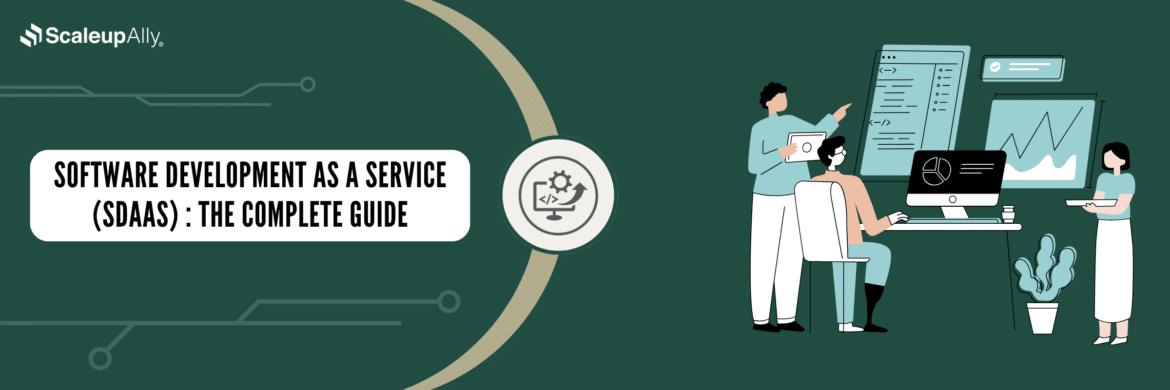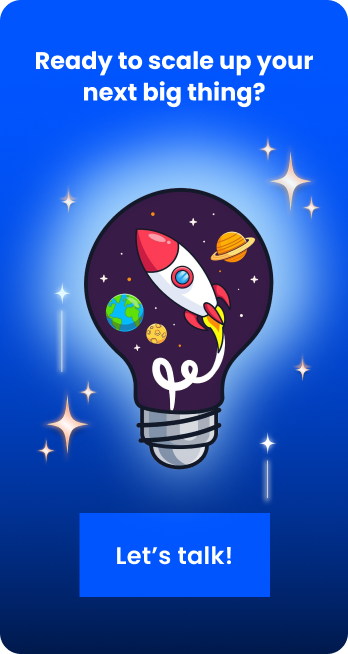
7 Key Steps of Website Development Life Cycle
Suprabhat Sen | December 17, 2023 , 8 min read
Table Of Content
Web development is incredibly popular today. Businesses must have an efficiently operating website or web application to fulfil their customers’ digital requirements. Irrespective of the industry, most businesses are committed to developing a visually appealing website to showcase their services.
However, web development is more than just coding. With numerous factors, adhering to a systematic process is essential to prevent issues. A website development life cycle (WDLC) offers a carefully planned methodology to achieve excellent outcomes. Seven website development life cycle phases should be followed to create an outstanding website.
We’ll delve into each web application development phase, providing detailed insights into every step outlined in the web app development process checklist.
Let’s journey through the seven key steps that constitute the WDLC.
What is Web Development?
Web development involves creating websites and web applications. This can range from making a basic single-page website to programming a comprehensive web application and a system for managing content.
The process of developing a website, known as the Website Development Life Cycle, includes several steps:
- Coding Application Logic: This involves writing the underlying code that makes the web application work.
- Incorporating Databases and Managing User Queries: Connecting the website to databases to store and retrieve information and manage user interactions.
- Designing User Interfaces: Creating the visual elements and layout users interact with on the website.
- Hosting the Website on Servers: Making the website accessible online by placing it on servers.
- Maintaining and Updating: Ongoing tasks to ensure the website continues to work smoothly and stays up-to-date with any necessary changes.
In custom web app development, each activity can be categorized into three main types:
- Server-Side Development: Involves the backend operations that happen on the server, such as processing data and managing databases.
- Client-Side Development: Focuses on the front end, dealing with what users see and interact with on their devices.
- Full-Stack Development: Encompasses server-side and client-side development, covering the entire spectrum of web application creation.
Now, let’s tackle the phases of web development in seven key steps.
7 Phases of Web Development
We’ve simplified creating a website into seven easy-to-follow steps, from planning to launching.
1. Project Planning
Let’s talk about the planning part. Every successful venture begins with a plan, and website development is no exception. Planning and thorough research pave the way for a solid foundation. First, you must decide how your website will look and where everything will be placed. This involves creating two important things:
- Sitemap: Think of a sitemap as a map that shows the overall structure of your website. It lists all the pages and explains how they are connected. This map is not only for people visiting your site but also for search engines like Google. A sitemap helps you organize your website content. It’s like a guide for your team to decide how each page will look, what it will do, and how it fits into the whole picture.
- Wireframe: A wireframe is like a blueprint for each page of your website. It shows where everything will be placed, from headlines to buttons and boxes. This plan includes how the page looks on computers and mobile devices.
By planning, you’re setting up the path visitors will take on your site. It’s like planning a route for them to follow, helping them move smoothly from one part of the site to another. This is crucial in ensuring your website looks good and works effectively for visitors.
2. Requirements Analysis
This phase involves defining features, functionalities, and the overall structure. People are quick to form opinions, and it only takes a fraction of a second—about 1/10th of a second, to be precise. This applies not only to meeting someone in person but also to websites.
When someone visits your website, it takes about 50 milliseconds (that’s 0.05 seconds) for them to decide whether they like it or not. They determine whether they’ll stay on your site or click away in that time. Just like snap judgments about people, first impressions of websites happen very quickly!
About 70% of small businesses lack a call to action (CTA). Analyzing requirements ensures your website addresses the needs of your audience while providing a seamless user experience.
3. Design
Once you’ve completed the initial planning and gathered all the requirements for structuring your website, it’s time to focus on the user interface. This is a crucial part of the life cycle of web development. It shapes how your website appears and feels to users, giving it a unique and recognizable identity that reflects your brand.
During this stage, you’ll define elements representing your brand, such as colors, logos, symbols, and multimedia content like pictures and videos. These branding elements play a vital role in maintaining a cohesive appearance across different platforms where your brand interacts with people—your website, social media pages, marketing materials, newsletters, and more.
The importance of maintaining consistency in these elements cannot be overstated. Consistency ensures that your brand’s look and feel remain uniform across all touchpoints, aiding people in remembering and recognizing your brand more easily. This familiarity builds trust with your audience, making your brand visually appealing and reliable.
Thus, in the life cycle of web development, the UI design stage goes beyond aesthetics; it’s about crafting a visual identity that lingers in people’s minds, contributing to your brand’s overall trustworthiness and success.
4. Development and Coding
With the blueprint in hand, it’s time to bring the vision to life through coding and development. This phase involves creating the actual website based on the design. After planning your design, the next step is development.
This involves hiring both backend and frontend developers to code your website. They’ll follow the best methods in the field and refer to detailed specifications.
It’s important that your website, from the technology it’s built on to its various features, can grow as your business grows. This ensures it can handle increased demands and scale along with your expansion.
5. Testing and Quality Assurance
Before you make your website available to the public, it’s important to test it thoroughly. This phase is the litmus test for the website’s functionality, performance, and compatibility across different devices and browsers.
Your website developers must examine your site’s different parts to ensure they work correctly. This includes checking for broken links and ensuring your site works well on different devices.
They should also use validators to check if the website’s code follows certain standards. It is important to test how fast your site loads and ensure it looks good and functions well on all devices.
Once manual and automated testing is done and everything looks good, your website is ready to be put on a live server and officially launched. Quality assurance ensures your website is not just visually appealing but also performs optimally, meeting the expectations of your audience.
6. Deployment
The moment of truth arrives—deployment. The website is launched into the digital sphere for the world to see. An efficient deployment strategy ensures a smooth transition from development to the live environment.
7. Maintenance and Iteration
Exciting update – your website has been successfully launched! However, this marks just the beginning of the journey. As your business expands, you may desire to elevate your website by introducing additional pages, enhancing features, and integrating new functionalities.
To guarantee the continuous success of your website, it is essential to adhere to a web app development life cycle. This involves:
- Editing Content: Make sure the information on your site stays accurate and up-to-date.
- Adding New Content: Keep your audience engaged with fresh and exciting material.
- Fixing Bugs: Address any issues or glitches that may arise to maintain a smooth user experience.
- Regular Backups: Safeguard your data by backing up your site, preventing potential loss.
- Installing Plugins: Boost your website’s capabilities by adding plugins to enhance its functionality.
Much like any other technology, websites require continuous maintenance and improvement. Regular updates, security patches, and content refreshes are vital to the web app development life cycle. This iterative process aligns with the ever-evolving digital landscape, ensuring your website remains relevant, secure, and optimized for success.
Conclusion
Every step in creating a website is crucial, whether the project is big or small. While writing code is important, paying attention to other aspects like design, checking for security, and having the quality assurance team run tests is equally vital.
Building a website is an ongoing process, and daily improvement is always possible.
Frequently Asked Questions
Q: How crucial is Testing in Web Development?
Testing ensures that your website functions flawlessly. According to industry reports, nearly 88% of online consumers are less likely to return to a site after a bad experience. Rigorous testing mitigates potential issues, ensuring a positive user experience.
Q: Why is Deployment a Significant Step in WDLC?
Deployment is the process of making your website live. Efficient deployment reduces downtime and ensures a smooth transition. Did you know? Websites with faster load times witness a 7% increase in conversions.
Q: Is Maintenance Necessary Post-Deployment?
Absolutely! Regular maintenance is vital for keeping your website secure and up to date. Studies indicate that 57% of users won’t recommend a business with a poorly designed website. Ongoing maintenance ensures your site remains both functional and secure.
Q: How do you Evaluate the Success of a Website?
Evaluation involves monitoring website performance, analyzing user feedback, and making necessary improvements. Data-driven decisions can lead to an increase in website effectiveness.
Related Blogs

Developing an App Like Airbnb in 2025: Costs, Key Considerations & Money-Saving Tips
Discover the cost to build an app like Airbnb, key factors, app types, and smart ways to optimize development expenses for better ROI.
Suprabhat Sen
Jun 29 ,
10 min read

Flutter vs Android Studio: What are the Key Differences?
Flutter vs Android Studio: Wondering which technology to choose to build your next app. Here is a detailed guide that will help you make a decision.
Suprabhat Sen
Jun 28 ,
14 min read

Software Development as a Service(SDaaS): The Complete Guide
Explore how SDaaS can streamline your development process, reduce costs, and boost your competitive edge. Learn how SDaaS can empower your business.
Suprabhat Sen
Jun 28 ,
16 min read








